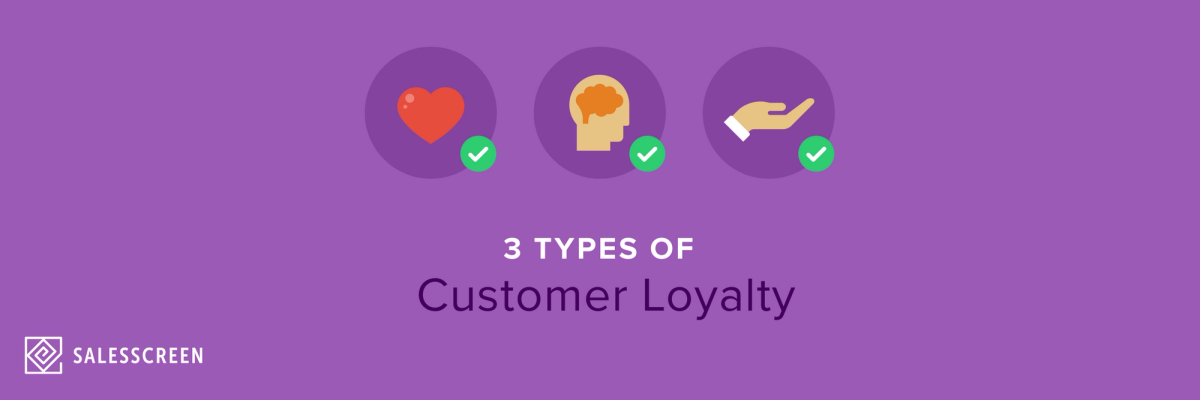
The 3 Types of Customer Brand Loyalty
Have you ever wondered what drives different customer segments to purchase your product time and time again? Or, perhaps you’ve wondered why customers seem to prefer your competitors’ products even though they seem to be inferior? Here, we take a look at brand loyalty and how you can use it to drive value.
0 min read.
Have you ever wondered what drives different customer segments to purchase your product time and time again? Or, perhaps you’ve wondered why customers seem to prefer your competitors’ products even though they seem to be inferior? Well, according to Christie Nordhielm, a clinical associate professor of marketing at the Ross School of Business, University of Michigan, customers can be grouped into 3 main categories of loyalty: head, hand and heart.

First, we’ll take a look at each of these and then we’ll explain a bit about why this is important and what it means for you.
Heart loyal customers
About: This group tends to follow their heart and is usually driven by altruistic motive, such as the desire to help the environment, support a special cause, or otherwise “make a difference in the world” with their purchase. For many in this category, the brand shapes their identity and serves as a badge of honor.
Main Problem: These folks are highly unlikely to switch products, since they are primarily driven by an inner belief and sense of purpose connected to these purchases. It is possible to come up with a similarly compelling motive, but generally fighting over idealism is not a great way to win over customers.
Examples: People who buy Toms shoes are a good example of this type of customer. They don’t generally buy the shoes because they are so amazingly comfy and fashionable (although, they have created a major following lately, but mostly due to the loyalty they generate). Rather, people buy Toms because “buying a pair gives a pair”. In other words, Toms gives a pair of shoes to someone in need for each pair purchased. For many folks, the ability to help others while simply buying a pair of shoes fills an inner part of the heart and therefore drives continued loyalty.
Head loyal customers
About: This group is driven by rationality and common sense. In fact, they are somewhat the total opposite of the heart loyals in that they will buy whatever makes the most sense rather than buying to fill a sense of inner purpose. To sell to this group, your brand must be the best, the most cost effective or drive some other very clear value.
Main problem: In order to target this group, you need to have an undoubtedly better product, or better marketing… or preferably both. For those selling B2B, this is generally where you need to be. Because while most people may buy something “just because”, business buy things to generate more cash value than what they pay for them.
Examples: People who buy the grocery store brand cereal or other items fit in this category. Likewise, people who buy the generic brand of clothing, medicine or other items tend to be “head loyals”. They are buying because it’s basically the same thing, but cheaper. They want the most value for their money.
Hand loyal customers
About: These customers tend to buy out of habit. They buy the same brand, every time, without checking for price or for what’s on sale. These are the type folks who always buy Pepsi or Always buy coke because that’s just what they like and they will not switch.
Main problem: Clearly, getting this group to switch brands is very difficult. Some ways to do this are by blind tests, such as the Pepsi Challenge. Another way is to offer deeply discounted trial pricing or freebies that allow them to test your product without any commitment or expectation. Getting this group of brand loyals to switch is difficult, but not impossible. In fact, most of the “try this…” items you see at the grocery store are designed to try to get people to try and buy something new.
Examples: Think of any main brand categories, whether it’s soda, pizza chains, toothpaste, phones, or other such products and you’ll have an example. Ever try to switch an iPhone user to Android or vice versa? Many people unknowingly fall into this category and if you can provide a superior product at limited or no risk, it is possible to win over large chunks of new customers. Your marketing and sales approach will have to be very clever, of course. Good luck.
The challenge with this, of course, is that the skills and resources needed to build and maintain these 3 types of loyalty are very different and require a different approach, marketing technique and sales model. So, for starters, it’s best to simply choose what type of brand loyalty you would like your customers to have, and then build, measure and learn from there.
Now, having explained the 3 types of brand loyalty, our next job is to create a sales and marketing plan that leverages the power of these identities. To do this, you’ll need to have specific answers to a few things:
The 4 Questions to solve for brand loyalty:
Who is your target audience?
For B2C, this may be as simple as name, phone number and address. Or, it may be what grocery stores they shop at and how often. You need to determine who your audience will be, based on what your products are and what you are hoping to achieve. This is Marketing 101. For B2B, you should probably begin targeting by industry, job title and location. Once you have these, you can target, analyze and refine until you are effectively creating clear customer segments with specific value propositions for each.
What products or services do you want your marketing team and sales reps to focus on?
Your company likely has multiple products with different uses and value propositions. So, one of the first things you need to determine is what products should be sold to which customers at which specific timeframe. Then, you can begin to create your sales strategy around this.
What activities are most important for success?
To sell your products, you will need to create goals and establish KPIs for each team member to focus on. Try and keep this pretty simple. For example, you can set a budget on how many of each type of task each salesperson needs to complete in order to achieve their quota. How many calls or emails should they make per week? How many offers should be sent? How many deals need to be closed on each product type in order to reach the sales quota? Should your sales team demo the product first or just sell it? What kind of questions do they need to ask potential customers? How should they present the product?
How are your salespeople connected to the company?
Do you have an in-house sales team? SDRs? Inside reps? Outside reps? Field sales? Account managers? BDRs? What is the sales model? Is it telesales? Door to door? Digital? Direct? Indirect? B2B? B2C? Other?
Once you have answered all of these questions, you need to determine how to recruit and hire talent, how to motivate your salespeople so they don’t leave you and how to set up a good incentives and recognition plan.







